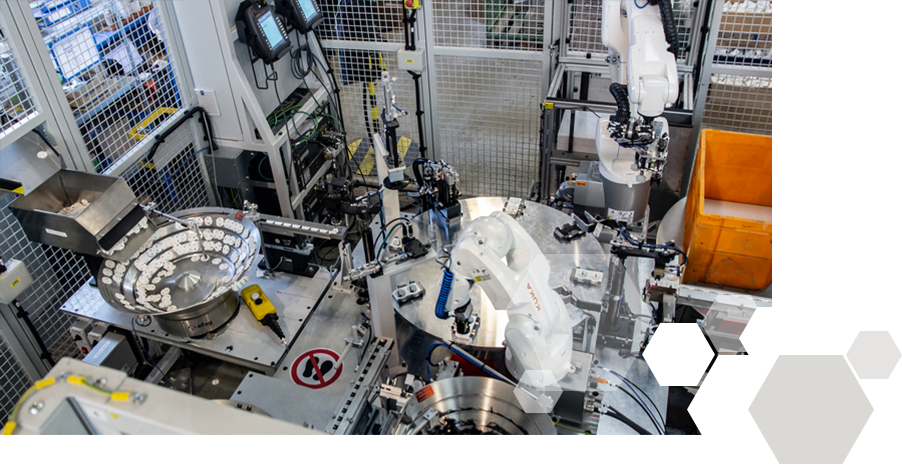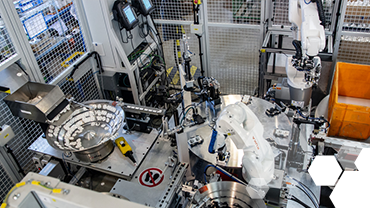For the project we used 2 KUKA KR- series robot arms and built 5 manipulator units. The dosing of the parts is ensured by 4 individual vibrating dosing system. One of the robotic arms inserted a spring-assembled part into the product, while the other also placed spacers while unloading the finished products. The product inspection stations, on which we used camera and special tool inspectors, played a key role in the assembly system.
Main units of the project:
- robot arms - 1 x KUKA KR3, 1 x KUKA KR10
- manipulators - 2 x 1 axial, 1 x 3 axial és 2 x 4 axial manipulators
- sensors - 1 x camera examiner, 1 x stecker examiner
- dosing - 4 x vibrating doser systems
The machine works with a cycle time of 5 seconds and can substitute the manual work of 5 workers who could have been moved to more valuable work positions.
An additional benefit of the project was that we automated the insertion of a tiny spring which ensures the operation of the child lock. Due to the size of this part and the special way in which it was inserted, this task required a series of fine mechanical operations that meant very meticulous, strenuous, yet monotonous work when carried out with human workforce, with a high risk of faults.
In the video below the cell was filmed during testing. We are pleased to hear from you if you are ahead of any similar tasks. Our team is ready to consult and help if you
contact us!

